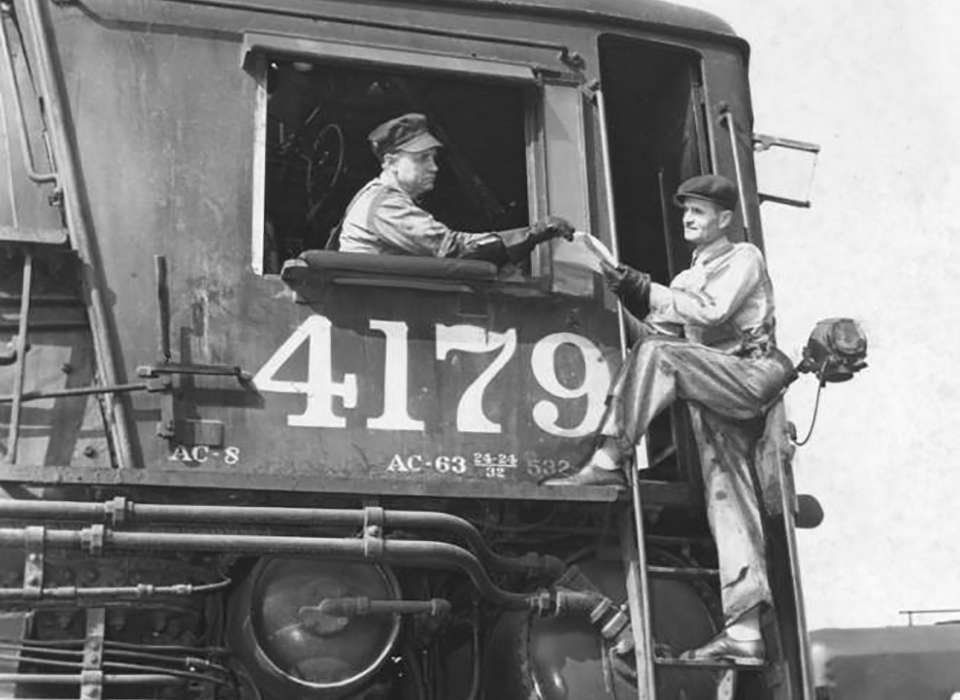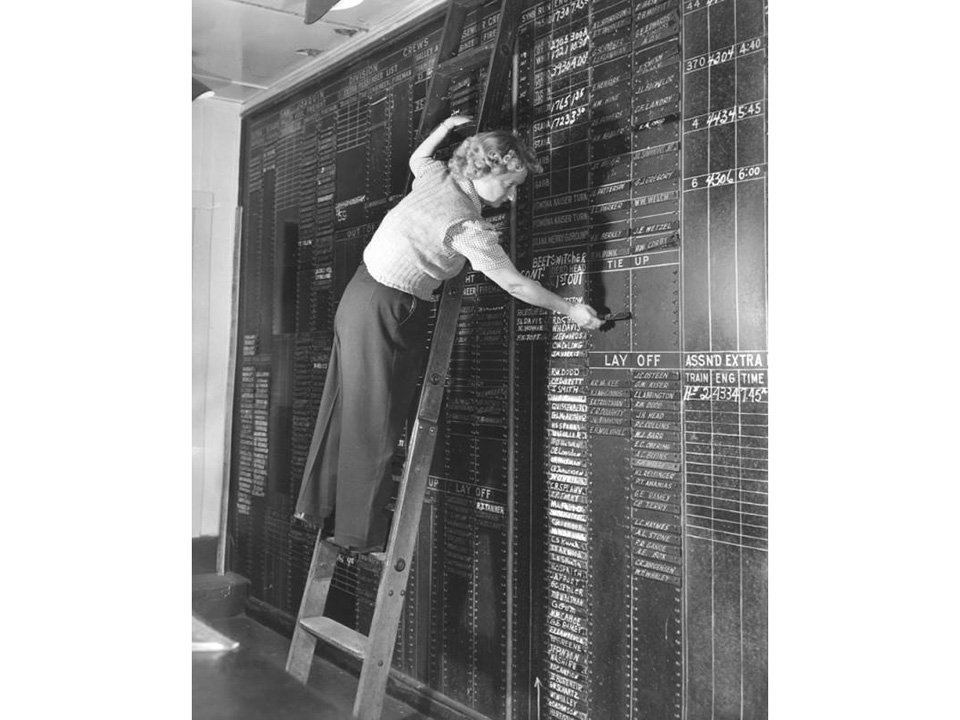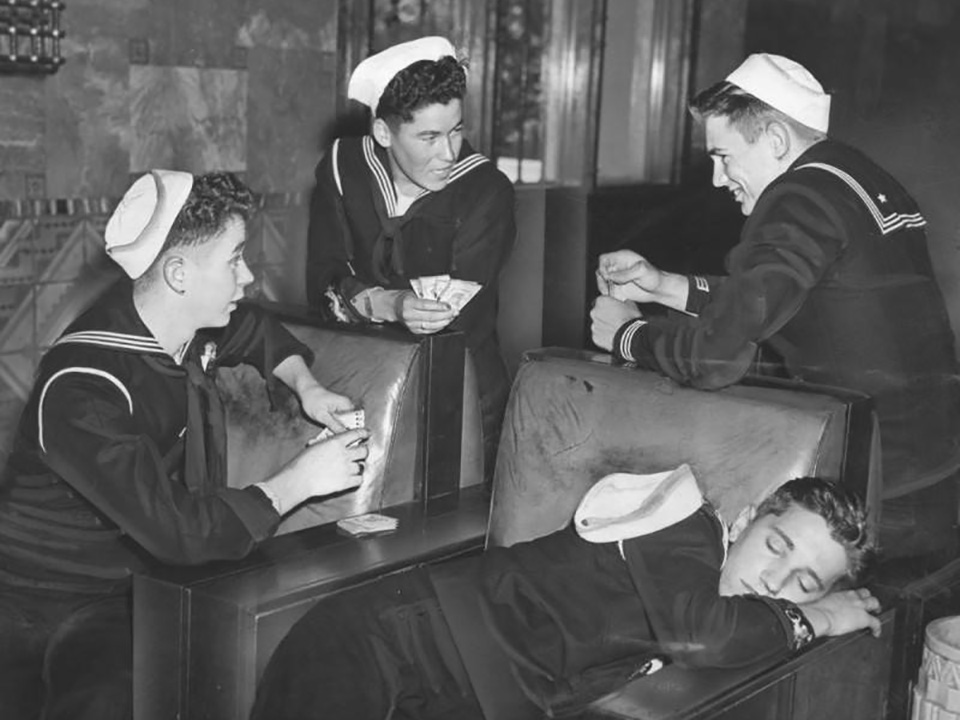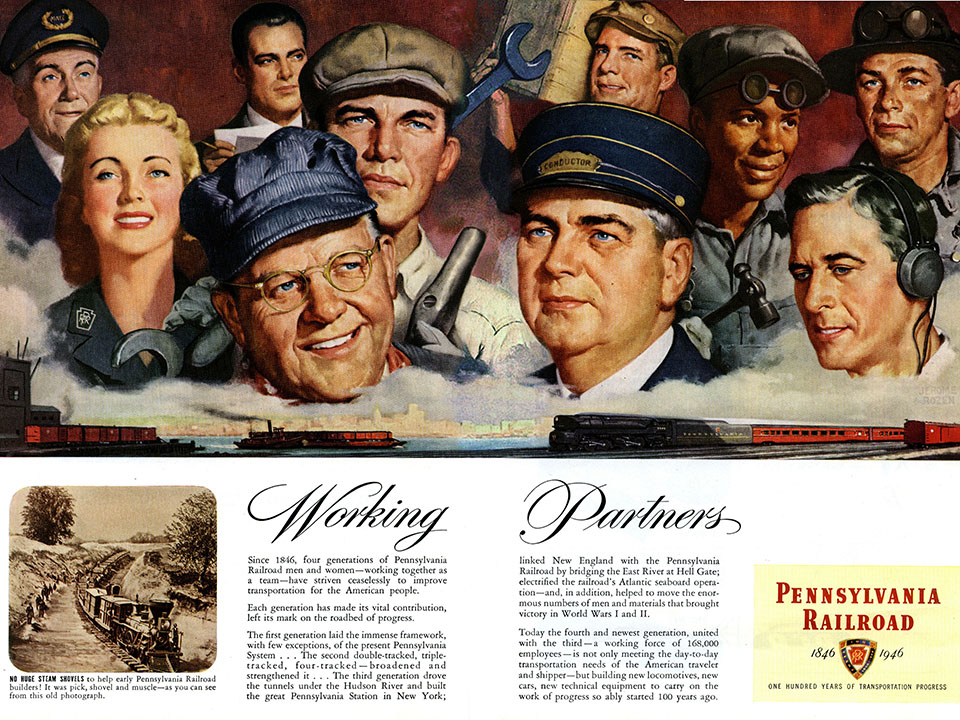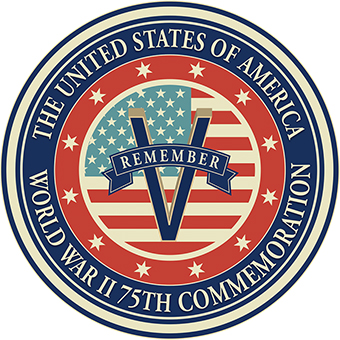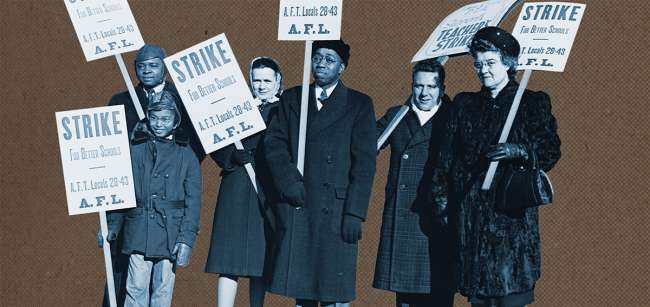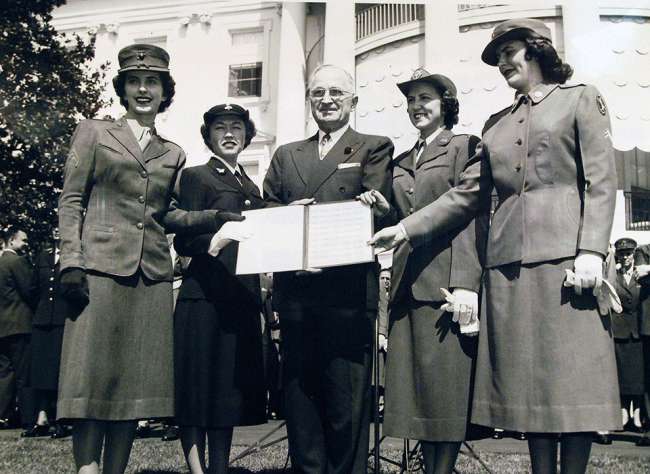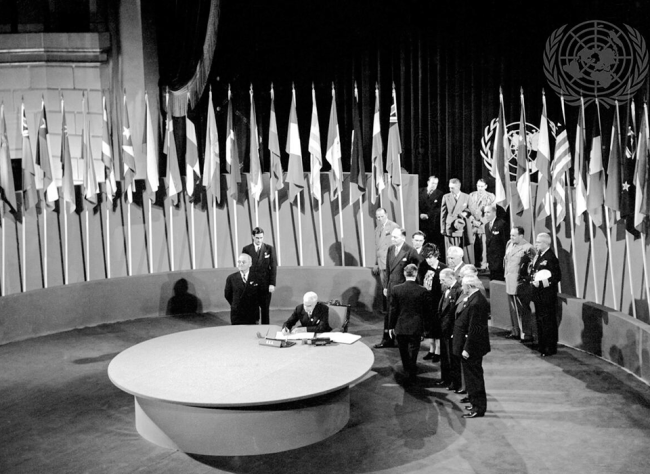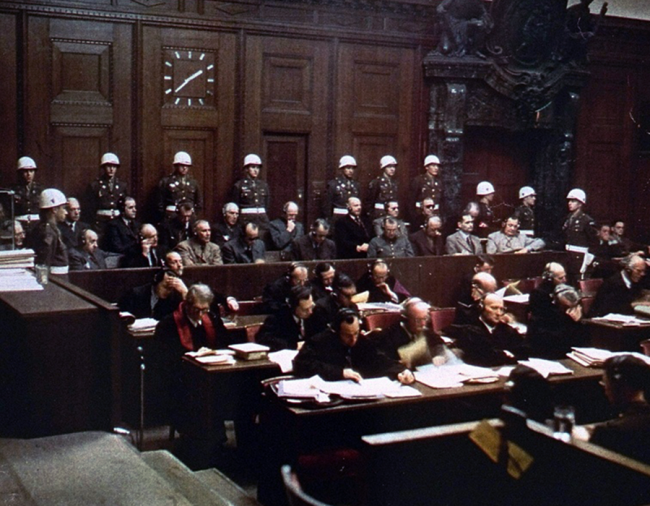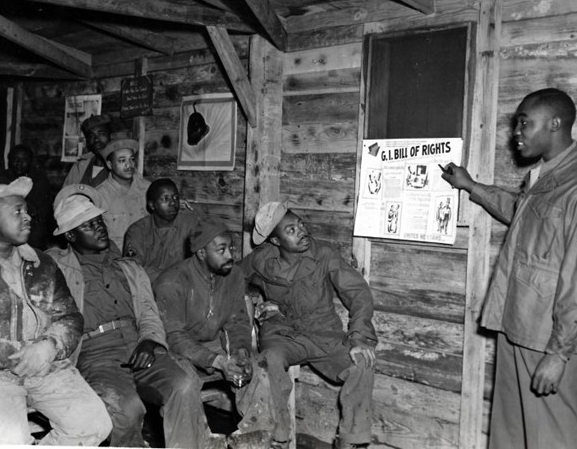Top Image: Engineer H. L. Gentry receiving the strike order on May 24, 1946, from fireman James Genisio in Southern Pacific's Cornfield Yard. Herald Examiner Collection/Los Angeles Public Library.
"Truman—I never forget the night—he come on [the] radio and said, “I appeal to each and every railroad worker in this country to return to work immediately. You’re striking against your government. A government still at war.” - Ralph Waldo Strickland, Brakeman at Seaboard Air Line Railway
Alabama native Ralph W. Strickland grew up on a farm but spent most of his life working for the railroad. In 1927, after a short stint in the Navy, Ralph joined his brother, Paul, in North Carolina, working for the Seaboard Air Line Railway. During the 1946 railroad strike, he was a brakeman with a wife and family to support. Strickland supported better pay and improved working conditions—but he worried about the safety of the nation with the railroads at a standstill.
With the end of the wartime no-strike pledge, workers across America—like Ralph Strickland—expressed their frustration with wages and working conditions through a series of strikes that involved over 5 million people from the end of 1945 and into 1946. On January 19, 1946, at more than 1,000 mills across the country, 800,000 steel workers walked off the job. There was a telephone strike, a meat packers strike, and a strike at General Electric. On April 1, 1946, John L. Lewis of the United Mine Workers called a nationwide coal strike. At the same time, a railroad strike was looming. Negotiations had been dragging on between railway management and 20 different unions, with Labor Secretary Lewis Schwellenbach acting as President Harry Truman’s mediator. The president invoked the Railway Labor Act, providing for a 60-day mediation period.
The Southern Pacific's crew caller Nancy Whitney pulls names off Los Angeles area jobs due to the rail strike on May 24, 1946. Herald Examiner Collection/Los Angeles Public Library.
After negotiations fell apart in April, a railroad strike was set for May 18. John R. Steelman, an economics professor and labor specialist working in the White House, made some progress with the unions. Only two holdouts remained. The two largest unions were headed by longtime Truman allies. Alexander F. Whitney was president of the Brotherhood of Railroad Trainmen, and Alvanley Johnston was president of the Brotherhood of Locomotive Engineers. The pair had provided financial backing for Truman’s 1940 Senate race and supported him in 1944 as Franklin D. Roosevelt’s running mate.
On May 17, 1946—the day before the scheduled railroad walkout—President Truman signed Executive Order 9727 for the government to seize and operate the railroads. The next day, the labor leaders agreed to postpone the strike for another five days. On Wednesday, May 22, Truman proposed an 18.5 cent raise for rail workers, but this failed to sway the union leaders. The following day, negotiations with labor leaders in the White House stalled. At 4:00 in the afternoon, the president welcomed convalescent veterans from Walter Reed and other military hospitals to a reception on the South Lawn. The Marine Corps band played, ice cream was served, and Truman shook hands with 865 visitors. Meanwhile, the railroad strike began.
Without the railroads, America was brought to a standstill. Freight trains stood idle in yards, baggage filled stations, and passengers were stranded.
Stranded at Los Angeles Union Station on May 26, 1946, by the rail strike, these sailors enjoy a card game while a buddy sleeps. Left to right, William Green, Roy Domenguey, Nadel Guspard, and Eugene Johman. Herald Examiner Collection/Los Angeles Public Library.
By Saturday, the front page of the Los Angeles Times reported “a complete transit tie-up” and the heaviest automobile traffic in the city’s history. The newspaper published a curtailed edition with fewer pages and no advertisements—its paper shipment was held up as a result of the strike. Shipments of butter were cut off from the Midwest to the Pacific Coast, so shoppers had to rely on a wartime staple, margarine. The Southern Pacific alone estimated that 17,890 loaded freight cars—3,000 carrying perishables—were tied up on its strikebound lines. The potato harvest in Bakersfield ground to halt without railroad cars to carry the crop, leaving 8,000 workers without jobs. Four thousand citrus workers in Orange County were also out of work. C. B. Moore, managing director of the Western Growers Association, predicted there would be “a superabundance of fresh fruit in the Los Angeles markets because growers won’t be able to ship to distant points.” Moore estimated the strike cost California and Arizona $450,000 a day. “We’ll probably have to plow under a lot of lettuce, potatoes, and onions.”
Across the country, other shortages quickly became apparent. Newspapers cut the size of their editions and removed advertising. The Atlanta Constitution kept only funeral and lodge notices and promised readers that it would not miss an issue “if it was humanly possible to avoid it,” given the shortage of paper and newsprint resulting from the strike. The Philadelphia Inquirer published as usual, but because of a truckers’ strike, copies were not delivered to homes or newsstands; the paper could be only purchased at the Inquirer building 24 hours a day, for three cents a copy.
Of 175,000 passenger trains normally in operation, only 100 ran. Fewer than 300 of 24,000 freight trains delivered their commodities to customers. On March 24, at 10:00 pm, President Truman took to the airwaves and addressed the nation from the White House on the railroad strike emergency. He called on the striking railroad workers to return to their jobs as a duty to their country.
In 1946, the Pennsylvania Railroad published an advertisement celebrating its employees and their role in transportation and national defense/Norfolk Southern Corporation.
“If sufficient workers to operate the trains have not returned by 4 p.m. tomorrow,” Truman warned in his radio address, he would call on the Army to operate the trains—he would get the country running again and break the strike. Newspapers published the text of the president’s speech the next day and reported that General Dwight D. Eisenhower—then Army Chief of Staff—had been recalled from his Georgia vacation to meet with Secretary of War Robert Patterson.
Truman requested that Congress be in session the next day—Saturday, March 25—and planned to address the body at 4:00 pm. John Steelman was still conducting negotiations with labor leaders Whitney and Johnston at the Statler Hotel, just north of the White House. In the House chamber, Truman called for temporary emergency legislation to authorize the president to draft the striking workers into the Armed Forces. At that point in his remarks, Les Biffle, Secretary of the Senate, handed the president a message. Truman continued: “Word has just been received that the railroad strike has been settled, on terms proposed by the President”—a compromise offer of a 16 cents per hour wage increase retroactive to January 1, 1946, and an additional 2.5 cents per hour beginning May 22, in consideration of withdrawal of all rule change demands for one year. Even though the strike was over, the House of Representatives passed the bill to draft the striking workers. It was defeated in the Senate.
With that compromise, the railroad strike was over, the workers were back, and the trains were running. Labor leaders denounced Truman as a strikebreaker. Alexander F. Whitney, president of the Brotherhood of Locomotive Trainmen, told reporters: “We lost our cause.” In San Francisco, P. O. Peterson, general chairman of the engineers on the Southern Pacific Railroad, told a newspaperman: “Our position still is that the President has just betrayed American labor—and the American public, as well.”
“I was the servant of 150 million people,” Truman later reflected. “I had to do the job even if I lost my political career.”
Railroads summed up the strike in their annual reports for the year. Faced with a workers’ strike and a coal strike, the Norfolk and Western Railway saw a decline in revenue across the board. The wage changes resulting from the strike amounted to $10,332,000 per year for the railroad based on 1946 employment. The Southern Railway reported that its revenue declined and that the new wage increases would cost the company $19,398,243, along with an additional $1,200,751 in payroll taxes. Despite the logistical and financial difficulties of 1946, the Southern promoted a sunny outlook in for 1947: “There is a bright side for the future, for, growing out of the settlement of the labor difficulties of the year, there will perhaps be a period of relative calm and, it is hoped, of greater industrial production than has been witnessed in peace time in the Country’s history.”
Ralph W. Strickland stayed with the Seaboard Air Line, retiring as a conductor after 44 years of service. He remained a loyal union member, paying $3 a month in dues for years and keeping his receipts in a cigar box.
Meet the Author
Jennifer Davis McDaid is the historical archivist for Norfolk Southern Corporation. She earned a master’s degree in early American history from the College of William and Mary.
This article is part of a series commemorating the 75th anniversary of the end of World War II made possible by the Department of Defense.
Cite this article:
MLA Citation:
APA Citation:
Chicago Style Citation:
